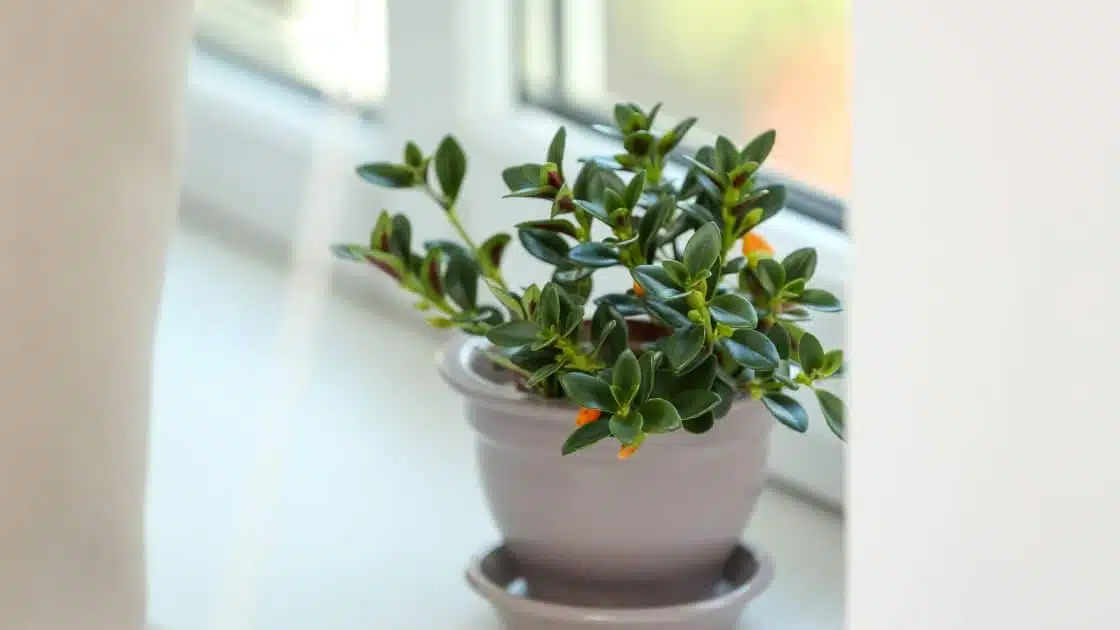Are you looking for a unique plant that will add a splash of color and personality to your indoor space? Look no further than the goldfish plant! With its vibrant orange flowers and glossy green leaves, this tropical beauty is sure to become the centerpiece of any room. In this article, we will provide a comprehensive care and growing guide for the goldfish plant, helping you keep it happy and healthy. So let’s dive in and learn more about this fascinating plant!
Goldfish Plant: An Overview
The goldfish plant, also known as Columnea gloriosa, is a member of the Gesneriaceae family. Its name comes from the unique shape of its flowers, which resemble a goldfish with its mouth open. Native to the rainforests of Central and South America, this plant is highly sought after for its showy blooms and easy care requirements.
Key Features of the Goldfish Plant
- Vibrant orange or red trumpet-shaped flowers
- Glossy green leaves with a velvety texture
- Compact and trailing growth habit
- Non-toxic to pets and humans
Care Guide for Goldfish Plant
Light
Goldfish plants prefer bright, indirect light. They thrive in east or west-facing windowsills where they can receive filtered sunlight. Avoid placing them in direct sunlight, as it can scorch their leaves. If your plant is not flowering, it may be due to insufficient light, in which case you can provide supplemental grow lights.
Temperature
Maintaining the right temperature is essential for the goldfish plant’s well-being. These tropical plants thrive in temperatures between 65°F to 75°F (18°C to 24°C) during the day and slightly cooler temperatures at night. Protect them from drafts and temperature extremes, as they can be sensitive to sudden changes.
Watering
Goldfish plants require consistently moist but not waterlogged soil. Water them when the top inch of soil feels dry to the touch. Avoid overwatering, as it can lead to root rot. During the winter months when growth slows down, reduce watering frequency.
Humidity
Being native to rainforests, goldfish plants love high humidity levels. Increase humidity around your plant by misting it regularly or placing a tray of water nearby. Alternatively, you can use a humidifier to create the ideal growing conditions.
Soil
Choose a well-draining potting mix with organic matter for your goldfish plant. A soil mix formulated for African violets or tropical plants works well. You can also add perlite or vermiculite to improve drainage.
Fertilizer
Feed your goldfish plant with a balanced, water-soluble fertilizer once a month during the growing season (spring and summer). Follow the manufacturer’s instructions for the correct dosage. During the winter months, reduce fertilization to once every two to three months.
Propagation and Repotting
Propagation
Goldfish plants can be easily propagated through stem cuttings. Select a healthy stem with at least two pairs of leaves and remove any flowers or buds. Dip the cut end in rooting hormone and plant it in a small pot filled with moist vermiculite or perlite. Place the cutting in a warm and bright location, and keep the soil consistently moist. Rooting should occur within a few weeks.
Repotting
Repot your goldfish plant every one to two years, or when you notice it becoming root-bound. Choose a pot that is one size larger and fill it with fresh, well-draining potting mix. Gently remove the plant from its current pot, taking care not to damage the roots. Place it in the new pot and backfill with soil, ensuring the plant is at the same depth as before. Water thoroughly and allow the plant to settle into its new home.
Read More:
Common Problems and Solutions
Yellowing Leaves
Yellow leaves on a goldfish plant can indicate overwatering or improper drainage. Check the soil moisture levels and adjust your watering routine accordingly. If the soil is consistently wet, allow it to dry out before watering again. Ensure that the pot has drainage holes to prevent water buildup.
Lack of Blooms
If your goldfish plant is not flowering, it may be due to inadequate light or improper pruning. Make sure your plant is receiving sufficient bright, indirect light. Prune back any leggy growth to encourage bushier growth and more blooms.
Pests
Goldfish plants can be susceptible to common houseplant pests like aphids, mealybugs, and spider mites. Inspect your plant regularly and treat any infestations promptly with an insecticidal soap or neem oil solution.
Conclusion
With its striking appearance and low-maintenance nature, the goldfish plant is a fantastic addition to any indoor garden. By following the care and growing guide outlined in this article, you can ensure that your goldfish plant thrives and dazzles with its colorful flowers. So go ahead and bring home this tropical beauty, and enjoy the joy it brings to your space!





